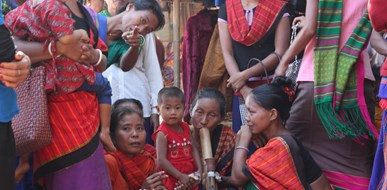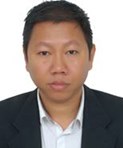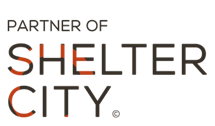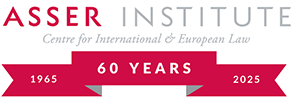An interview with human rights defender Dilip Chakma: “In India Chakma’s are a minority in all aspects”
Published 7 October 2019
The Chakma’s are an indigenous community and can be found in several countries in Southeast Asia, such as India, Myanmar and Bangladesh. ©Flickr.
Shelter City is a worldwide initiative to protect human rights defenders at risk and support them to reclaim their civic space. Dilip Chakma, a lawyer and human rights defender from India, recently started as a Shelter City Research fellow at the Asser Institute. We asked Dilip Chakma what he hopes to achieve during his stay at the Asser Institute.
Can you tell us a bit about yourself?
“I am a lawyer by profession. As a human rights lawyer, I take up indigenous peoples’ cases, specifically on human rights violations. Originally, I come from Mizoram, a small state in northeast India. I belong to the indigenous tribe known as the Chakma community.”
What do you do in your day-to-day work?
 “I provide legal advice and representation to human right defenders, civil society groups and to victims of human rights violations. I take up cases of rights violations with the National Human Rights Commission and other available forums, and seek justice and redress for victims. In the past years, I worked on cases of torture in police custody and judicial custody.
“I provide legal advice and representation to human right defenders, civil society groups and to victims of human rights violations. I take up cases of rights violations with the National Human Rights Commission and other available forums, and seek justice and redress for victims. In the past years, I worked on cases of torture in police custody and judicial custody.
I do a lot of research and advocacy work on areas such as environmental, land and forest rights, IPR related issues of indigenous peoples, and on business and human rights. I also conduct capacity building and training programs on rights issues and for rights defenders. In India, I have also founded the Chakma Law Forum and the Indigenous Rights Advocacy Centre (I-RAC), which runs a legal helpline to assist people and marginalised indigenous communities in need of legal help and those in distress. I also advise other organisations on rights advocacy and in the field of socio-economic and educational development in North-east India.”
Who are the Chakma’s and what struggles do they face?
“The Chakma’s are an indigenous community and can be found in several countries in Southeast Asia, such as Myanmar and Bangladesh. In India, there are Chakma’s in several states in the northeast, such as Mizoram, Tripura, Assam and Arunachal Pradesh. Chakma’s have a long history. Unfortunately, it is not a very happy one. The Chakma kingdom was divided in the partition of India in 1947, and its homeland- the Chittagong Hill Tracts (CHT) - was awarded to Pakistan. The partition of the Chakma kingdom resulted in the fragmentation of both its land and its peoples between two nations. While a section of the Chakma’s remained within India, the rest were left out of the country’s new boundaries and ended up in the then East Pakistan (now Bangladesh). That is essentially how the struggle of the Chakma’s began.”
“In India, Chakma’s are a minority in all aspects. They face discrimination by the state authorities, but from other ethnic groups as well. Their community has remained one of the most backward and vulnerable in the region. In recent years, this discrimination has become more systematic and institutionalised. In the state of Mizoram, for instance, the government recently introduced discriminatory laws to deprive Chakma students from attending medical and engineering courses through government-sponsored quota, that deny equal access to higher education to students belonging to my community.
State authorities have recently been serving eviction notices to many Chakma villages. These villages are, arbitrarily, being branded as “illegal” by the authorities, with the objective to evict them. In total, around twenty-five villages have been declared illegal so far. But there are other forms of discrimination as well. Think of limited entry into the job market, poor infrastructure, and negligible access to medical services, as well as political prosecutions, whereby people are deprived of their government entitlements on the basis of state sponsored discriminatory policies and rules.
In the state of Arunachal Pradesh, there is the issue of statelessness of the community. The majority of the Chakma population in this state have not been granted citizenships. This means, that people are deprived of basic rights that other citizens are entitled to. The Chakma’s continue to face an uncertain future as the state authorities continue to disregard an order of the Supreme Court that ordered the state to grant them citizenship rights way back in 1996.”
In what ways can you help your community in bettering their position in Indian society?
“For many decades, the members of the Chakma community faced discrimination in silence. The community could not do much because there were not many people to raise their issues. Therefore, their issues remained unknown and untold to the outside world. In recent years, however, we have managed to raise the issue of discrimination towards the Chakma community by the government. We have taken up some of these rights violations cases and issue of discrimination with some positive outcome. We sought the intervention of the Courts of law and in some cases we went up to the Supreme Court of India for justice. We have been successful in giving equal access to education for minority students. We are also working on the eviction cases of the Chakma villages.
Another issue that my team is currently working on, is the problem of displacement of the community. The Indian government constructed a long barb-wired border between India and Bangladesh, in the corridor where my community lives, from the north to the south across the boundary fence. The result is that many villages are left in this so called ‘no man’s land’, with thousands of families living there for years with no prospect of compensation, rehabilitation or even resettlement. This has created a new group of internally displaced peoples mostly belonging to my community.”
What do you hope to achieve in the coming months as a fellow researcher at the Asser Institute?
“At the moment, I am doing research on the impact of business on human rights. My area of interest is land grabbing and land acquisition by the state and large corporations in indigenous territories. It is an important topic, because I foresee the Indian government opening up the Northeast region for business and for large corporations, and possibly for extracting companies. Currently, the Northeast region is governed by regulation that does not permit the easy entry of corporations. However, to enhance economic and strategic relations with Southeast Asia, India is opening itself up with its new Look East Policy. This means that there will eventually be free movement of goods and people from mainland Indian to South-east Asia through the Northeast region. I suspect that in the near future, the current regulations that protect the Northeast region, will be done away with, thereby making the indigenous communities vulnerable. I hope that the research I am doing here at the Asser Institute will help me to stand up for the rights of these communities. I started here three weeks ago, but I am already learning a lot. I want to make maximum use of the institute’s expertise and resources in the next three months. With the trainings and all the meetings with fellow human rights defenders and experts that the Justice and Peace Foundation has organised for me as well, I am sure that my stay here in The Hague and at the Asser Institute will not only be exciting, but also very purposeful.”
About the Shelter City Fellowship Programme
The Shelter City Fellowship Programme is a project initiated by Justice and Peace Netherlands that provides temporary relocation and training to legal practitioners who fight against human rights violations in their home countries. The T.M.C. Asser Instituut hosts one Shelter City fellow per year for three to six months through its Asser Visiting Researcher Fellow Programme. Shelter City Fellows carry out research in the fields of human rights, international law or European law. In addition to researching the situation in their home country, human rights defenders will be part of the regular research community and contribute to the Institute’s research by taking part in one of the three research strands. They will also share the conclusions of their research with a wider public during lectures.

Text by Donika Elshani.
